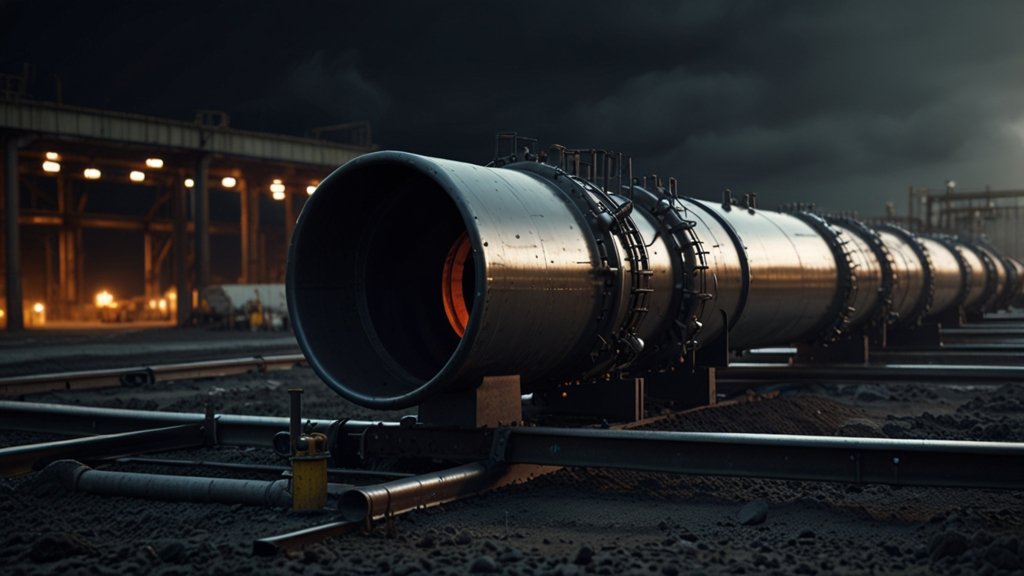Table of Contents:
- What Makes Timely Pipeline Inspections Essential
- Age and Material of the Pipeline
- Sudden Drops in Pressure or Efficiency
- Visible Leaks, Corrosion, or Staining
- Unusual Noises, Vibrations, or Odors
- Compliance, Safety, and Regulatory Triggers
- Best Practices for Proactive Pipeline Monitoring
What Makes Timely Pipeline Inspections Essential
Pipeline systems are the lifelines for countless industries, delivering vital resources such as water, gas, or petroleum efficiently and safely. Ignoring the health of these systems can lead to catastrophic failures, safety incidents, or environmental harm. Scheduling inspections at strategic intervals enables owners and operators to protect their investments, detect minor issues before they escalate into emergencies, and comply with local or federal guidelines. Modern solutions, like an inline inspection tool, allow teams to scrutinize internal pipeline conditions while minimizing downtime, increasing confidence in maintenance decisions.
Studies by the U.S. Pipeline and Hazardous Materials Safety Administration reveal that, while technology has made pipelines extremely safe, the most common causes of pipeline failures are corrosion, external interference, and aging infrastructure. Timely inspections address these issues early, significantly reducing the likelihood of a disruption that could impact safety and the bottom line.
Age and Material of the Pipeline
The age of a pipeline is a critical indicator when planning inspections. Older systems, particularly those built before the 1970s, often feature materials like cast iron, unlined steel, or early plastics that degrade faster and are more prone to failure. Even newer pipelines, constructed of advanced alloys or modern composites, are not immune to deterioration caused by soil conditions, chemical exposure, or operational stress. Industry standards frequently mandate shorter inspection intervals for older or high-risk materials.
As time passes, pipelines may become brittle or develop microfractures and pits that are invisible from the exterior but can threaten the integrity of the whole system. Maintaining material science research helps operators make better decisions about upgrades or replacement schedules. Prioritizing inspections for veteran pipelines can prevent surprise failures and demonstrate due diligence to regulators.
Sudden Drops in Pressure or Efficiency
System performance dips can be more than an inconvenience—they are often an urgent sign of hidden problems. A sudden loss of pressure, unexpected reduction in flow, or inconsistent delivery can all point to pipeline blockages, leaks, or mechanical malfunctions. Operators commonly notice these shifts in their digital SCADA system or through real-time alerting technologies integrated with the pipeline.
Investigating the root cause quickly is paramount. Left unchecked, pressure fluctuations or reductions in efficiency can result in ongoing product loss and significant financial costs. Proactively using inline inspection tools enables direct assessment of potential problem spots without requiring immediate, invasive excavation. Early action prevents small defects from becoming widespread system damage.
Visible Leaks, Corrosion, or Staining
Physical evidence of pipeline distress, such as water stains, patches of unexpected moisture, or rusty deposits near joints and valves, should never be ignored. These visible signs often indicate leaks that may pose significant safety hazards or signal deep-seated internal corrosion. Immediate attention helps avoid escalation into hazardous spills, property damage, or environmental contamination.
Surface rust or bubbling paint is an early warning of oxygen or moisture intrusion, leading directly to localized metal loss. Experts recommend swift action because even minor leaks or corrosion can quickly weaken pressure ratings or compromise welded joints. Regular external and internal assessments, prompted by any new visible marks or corrosion, are a key part of routine maintenance.
Unusual Noises, Vibrations, or Odors
Anomalies like persistent knocking sounds (often called “water hammer”) and hissing or vibrating pipes are not just nuisances—they could be symptomatic of emerging faults. Trapped air, pressure surges, or deteriorating supports and anchor points might cause these signals. Odors of chemicals, fuel, or “rotten egg” smells are even more urgent, as they may point to the release of hazardous substances.
Addressing strange noises or odors is especially critical in busy areas where pipelines run beneath sensitive environments. As soon as these indicators are detected, qualified professionals using advanced diagnostics should initiate a check to ensure public safety and regulatory compliance.
Compliance, Safety, and Regulatory Triggers
Legislative frameworks require pipelines to meet strict safety standards. Triggers for immediate inspection can include reportable events, changes in operational conditions, or reaching mileage thresholds for porous or previously repaired lines. Failing to meet compliance milestones puts companies at risk of fines, loss of licensure, or even forced shutdowns.
Beyond avoiding penalties, prioritizing inspection at regulatory intervals establishes a conscientious safety culture. When teams coordinate with external auditors or inspectors, they ensure public safety and long-term asset protection. Staying current on evolving compliance requirements is an ongoing responsibility for anyone managing pipeline infrastructure.
Best Practices for Proactive Pipeline Monitoring
Vigilance is the best safeguard against pipeline emergencies. Implementing digital monitoring solutions alongside regular manual inspections delivers the best results. Building strong relationships with inspection providers, embracing predictive maintenance, and maintaining detailed records of all assessments streamline compliance and speed up responses to warning signs.
The continual reference to industry guidance—such as updates from regulatory bodies and technical associations—elevates the quality and consistency of monitoring efforts. Early detection makes remediation faster and less disruptive, safeguarding operational investments and the communities pipelines serve. Smart, schedule-driven inspection practices, from entry-level visual reviews to cutting-edge internal scans, keep critical infrastructure resilient despite age, activity, and environmental variables.
YOU MAY ALSO LIKE: Streamlining Project Timelines with Efficient Material Delivery











